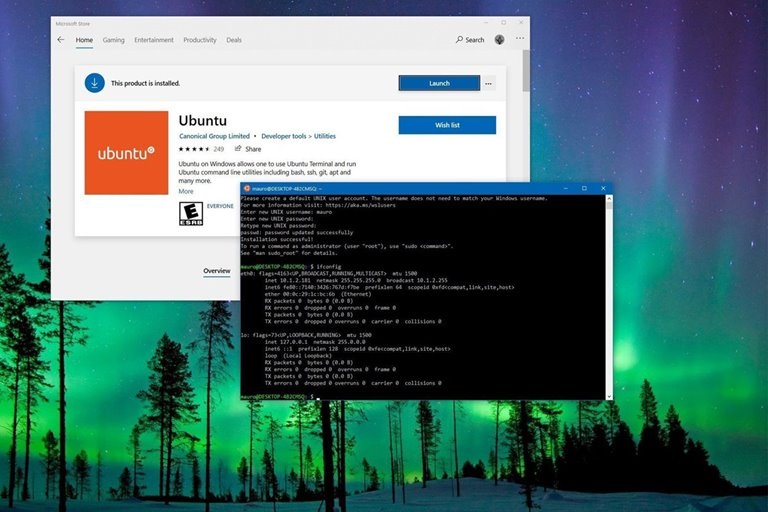How to Install Windows Subsystem for Linux (WSL) on Windows 10
Using the Windows Linux (Wsl) Subsystem, You Can Install Linux alongside Windows 10 without the need for a second device or virtual machine.
Windows Linux (Wsl): In Windows 10, Windows Subsystem for Linux (WSL) is a feature that provides a lightweight environment for installing and running Linux distributions (Ubuntu, OpenSUSE, Debian, and others) without the need for a complex, licensed machine or PC configuration. It is not separate.
WSL does not have a graphical interface. Still, network developers and admins can use Linux command-line tools and services such as vim, tmux, academics, sshd, Apache, and MySQL, and run Bash shell scripts written in Python, Ruby, C#, and many other command-line applications.
This tutorial will teach you how to install the Windows Subsystem for Linux using the Settings and PowerShell applications. We will also provide instructions for downloading and installing Linux distributions, as well as steps for properly removing unnecessary open-source environment components.
Install the Windows Subsystem for Linux using Settings.
If you want to run Linux distributions on Windows 10, you must enable the WSL (Windows Subsystem for Linux) feature before downloading and installing the desired version.
Activate the Linux Subsystem in Settings.
To install WSL using Windows 10 Settings, follow these steps:
1. Open Settings.
2. Click Apps.
3. Under the Related Settings section, click Programs and Features.
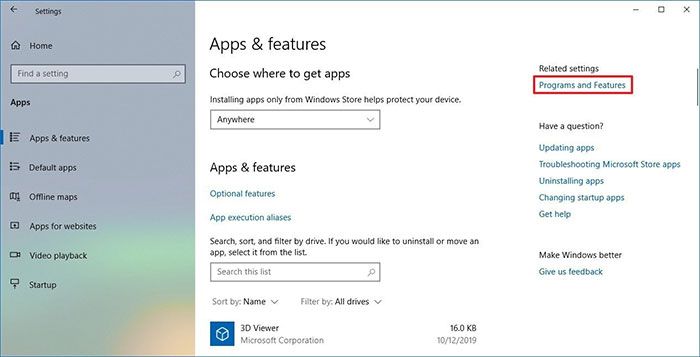
4. Click Turn Windows features on or off in the left panel.

5. Check the Windows Subsystem for Linux option.
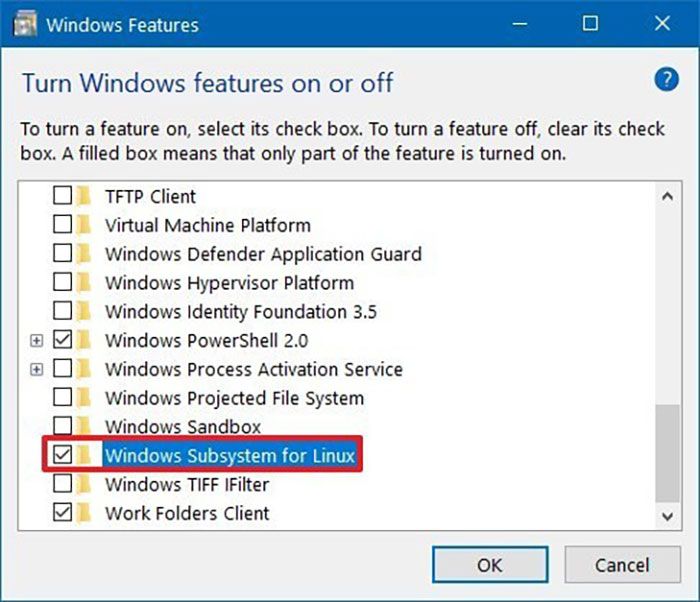
6. Click the OK button.
7. Click the Restart Now button.
After completing the steps above, the environment for downloading and installing Linux distributions on Windows 10 is set up.
Install Linux distributions using the Microsoft Store.
Follow the steps below to install the Linux distribution on Windows 10:
1. Open the Microsoft Store.
2. Search for the desired Linux distribution. Some of the available distributions are:
- Ubuntu
- OpenSuse Leap 15
- Kali Linux
- Debian
- Alpine WSL
- Suse Linux Enterprise 12
3. Select the desired Linux distribution.
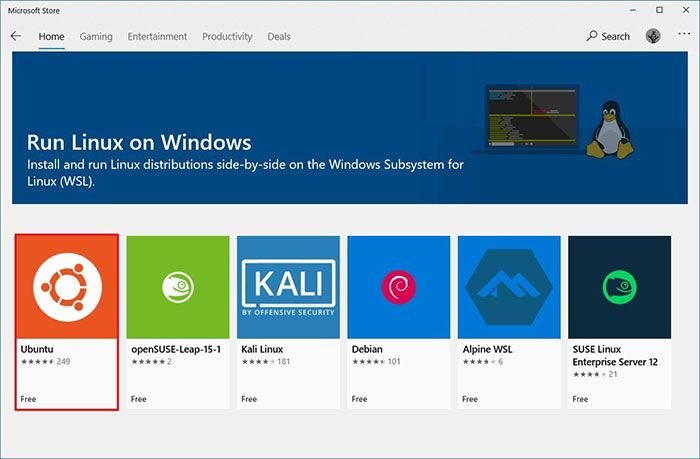
4. Click the Get or Install button.
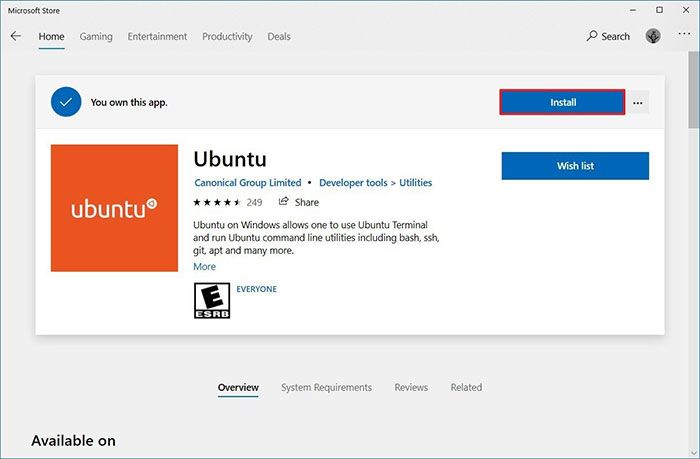
5. Click the Launch button.
6. Create a username for the Linux distribution and press Enter.
7. Enter the desired password for distribution and press Enter.
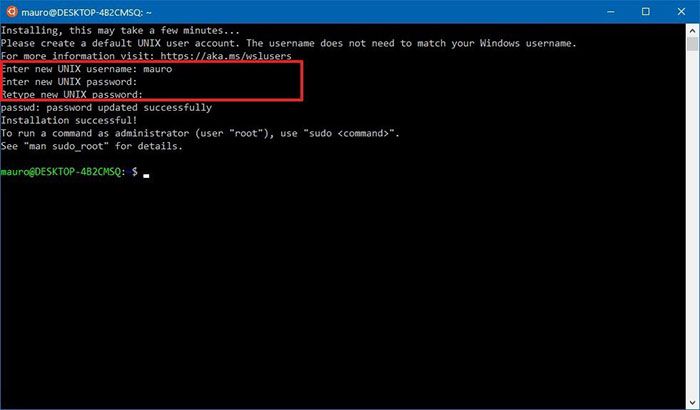
8. Repeat the password and press Enter to confirm.
After completing the above steps, you can use distributions without a graphical interface.
Delete Linux distributions using Settings.
If you no longer need to run Linux on your device, it is recommended that you delete distributions and disable WSL. Follow the steps below to remove the Linux distribution:
1. Open Settings.
2. Click Apps.
3. Click Apps & Features.
4. Select the desired distribution under the Apps & Features section (Ubuntu).
5. Click the Uninstall button.
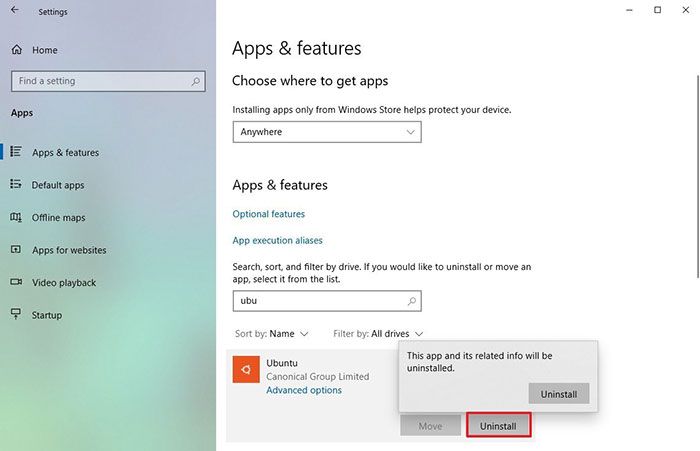
6. Click the Uninstall button to confirm.
After completing the steps above, the Linux distribution will be removed, and you can then follow the steps to disable WSL.
Turn off the Linux Windows subsystem using Settings
Follow the steps below to disable WSL on Windows.
1. Open Settings.
2. Click Apps.
3. Under the Related Settings section, click Programs and Features.
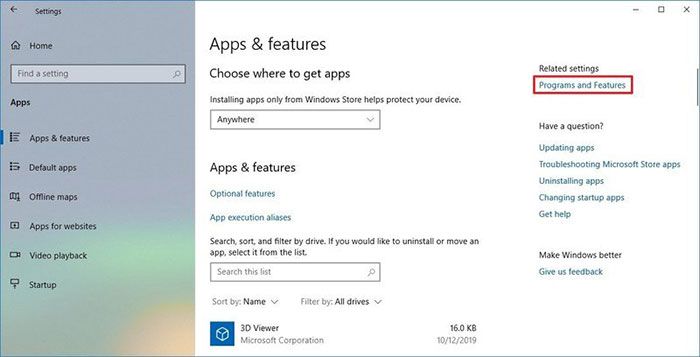
4. Click Turn Windows features on or off from the left panel.
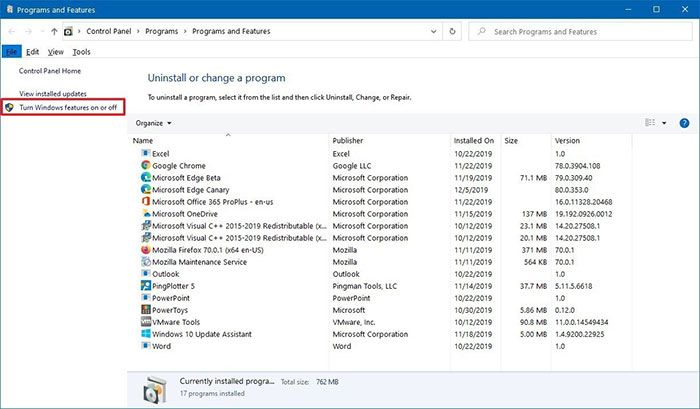
5. Uncheck Windows Subsystem for Linux.
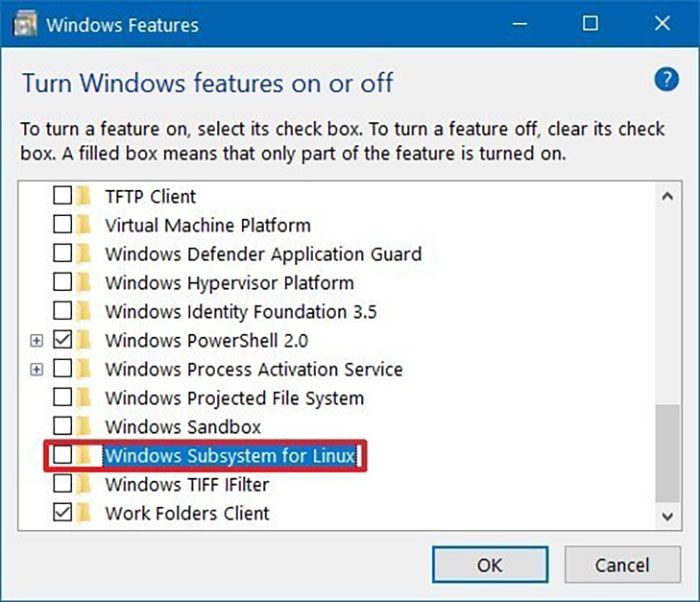
6. Click the OK button.
7. Click the Restart Now button.
After completing the steps, WSL will be removed from your device.
How to install the Linux Windows subsystem using PowerShell
Suppose you cannot access Windows graphics or prefer the command line. In that case, you can use PowerShell to activate the Windows Linux subsystem, download and install its distributions, and undo all changes.
Activate the Windows Subsystem for Linux using PowerShell.
Follow the steps below to install the Windows Subsystem for Linux using PowerShell:
1. Open Start.
2. Search for PowerShell, right-click on the first result, and select Run as administrator.
3. Type the following command to activate the Linux subsystem and press Enter:
Enable-WindowsOptionalFeature -Online -FeatureName Microsoft-Windows-Subsystem-Linux
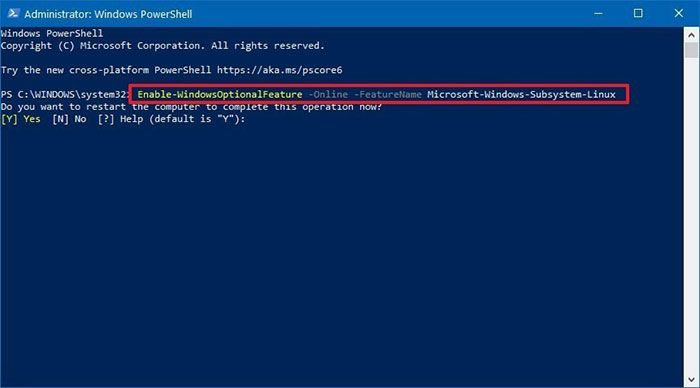
4. Type tY, press Enter to confirm, and restart the computer.
After completing the steps, you can follow the instructions to download and install any Linux-compatible distribution through the Microsoft Store.
Install Linux distributions using PowerShell.
To download and install Linux distributions (including Ubuntu) with PowerShell, follow these steps:
1. Open Start.
2. Search for PowerShell, right-click on the first result, and select Run as administrator.
3. Type the following command to select the download folder and press Enter:
cd c: \ PATH \ TO \ DESTINATION-FOLDER
With this example, you will be redirected to the data folder on the primary root drive:
cd c: \ data
4. Type the following command to download Ubuntu and press Enter:
Invoke-WebRequest -Uri https://wsldownload.azureedge.net/Ubuntu_1604.2019.523.0_x64.appx -OutFile Ubuntu.appx –UseBasicParsing
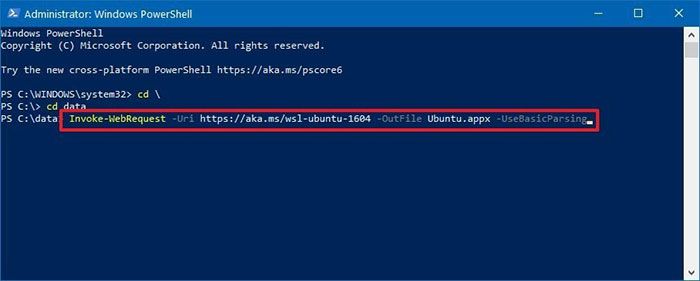
The above command downloads Ubuntu version 16.04. However, you may need to update the command with the name and distribution you want to download.
Note: The link in this step and the link in the screenshot look different, but they are the same. The link in the screenshot is a shortened version.
5. Type the following command to display the actual name of the installer and press Enter:
dir
Type the following command to install Ubuntu 16.04 and press Enter:
Add-AppxPackage. \ APP-NAME.appx
This example installs the Ubuntu distribution on Windows 10:
Add-AppxPackage. \ Ubuntu.appx
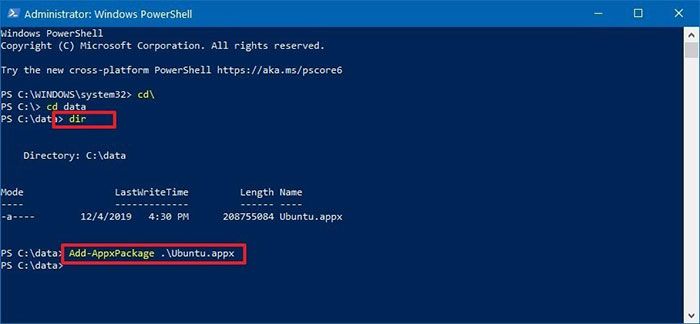
7. Open Start.
8. Search for a new Linux distribution (for example, Ubuntu) and click on the first result to run.
9. Create a username for the Linux distribution and press Enter.
10. Enter the desired password and press Enter.
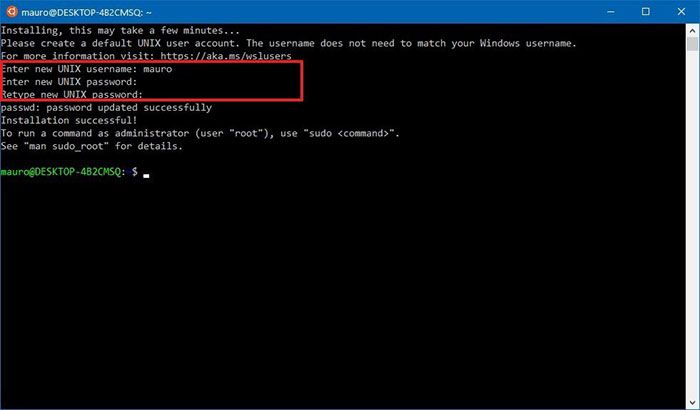
11. Repeat the password and press Enter to confirm.
After completing the steps, you can use Ubuntu or any other distribution without a graphical user interface.
Remove the Linux distribution using PowerShell.
If you want to reset the changes, delete the Linux distributions before disabling WSL.
1. Open Start.
2. Search for PowerShell, right-click on the first result, and select Run as administrator.
3. Type the following command to find the name of the distribution and press Enter:
Get-AppxPackage * PARTIAL-DISTRO-NAME *
This example searches for the application package that includes the word Ubuntu in the name:
Get-AppxPackage * ubuntu *
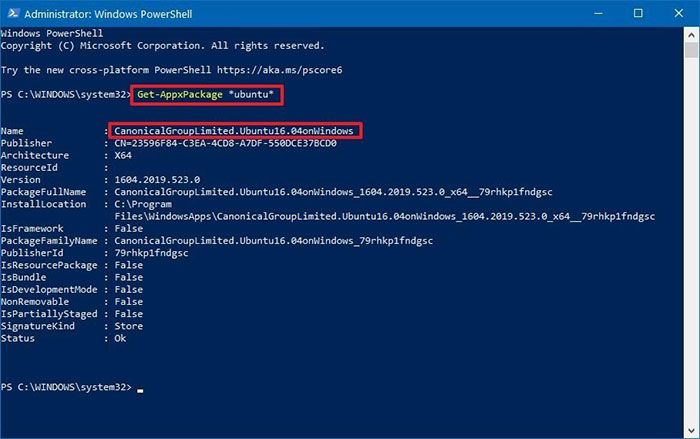
On the command line, replace the phrase Ubuntu with the distribution’s name.
4. Type the following command to uninstall the Linux version installed on your computer and press Enter:
Get-AppxPackag FULL-DISTRO-NAME | Remove-AppxPackage
This example removes the Ubuntu package from Windows 10:
Get-AppxPackage CanonicalGroupLimited.Ubuntu16.04onWindows | Remove-AppxPackage
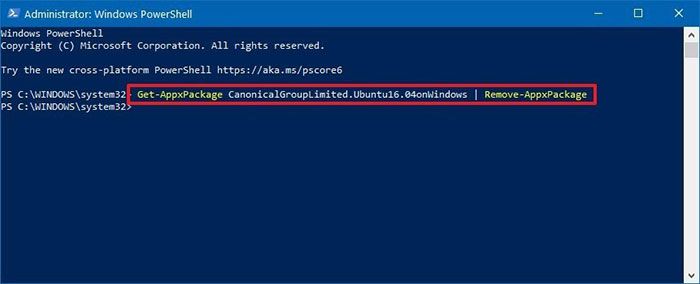
In this command, be sure to replace CanonicalGroupLimited.Ubuntu16.04onWIndows with the name of the distribution.
After completing the above steps, you can turn off the Windows Linux subsystem on your computer.
Turn off the Linux Windows subsystem using PowerShell
Follow these steps to disable WSL using PowerShell:
1. Open Start.
2. Search for PowerShell, right-click on the first result, and select Run as administrator.
3. Type the following command to activate the Linux subsystem and press Enter:
Disable-WindowsOptionalFeature -Online -FeatureName Microsoft-Windows-Subsystem-Linux
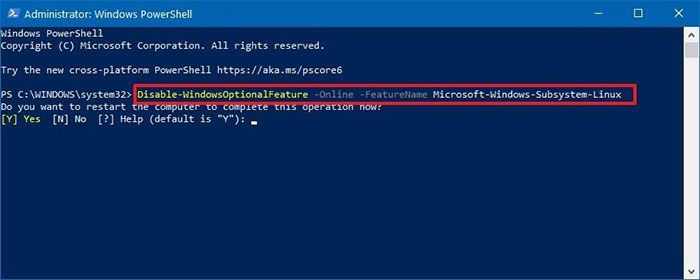
4. Type the letter Y and press Enter to confirm. Then restart your computer.
After completing the above steps, the Linux environment on your computer will be disabled.
FAQ
What is WSL for?
It lets you run a Linux environment (bash, Linux command-line tools, servers, scripts) alongside Windows.
How do I enable WSL?
Open Windows Settings → Apps → Programs & Features → Turn Windows features on or off → check “Windows Subsystem for Linux” → click OK → then restart your PC.
How to install a Linux distribution?
Open Microsoft Store, choose a Linux distro (e.g. Ubuntu, Debian), click Install, then Launch → set a Linux username & password → start using Linux.
